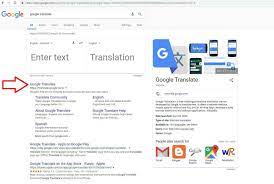Audio Translator: Breaking Down Language Barriers
In today’s globalized world, language barriers can be a major obstacle to communication. Whether you’re traveling to a foreign country, working with colleagues from different parts of the world, or simply trying to communicate with someone who speaks a different language, understanding each other can be a challenge. Fortunately, with the help of technology, breaking down these barriers has become easier than ever before. One such technology that has been gaining popularity is the audio translator.
An audio translator is a software application that uses speech recognition and machine translation technology to convert spoken words from one language into another. This means that you can have a conversation with someone who speaks a different language and understand each other in real-time.
There are many situations where an audio translator can be incredibly useful. For example, if you’re traveling to a foreign country and don’t speak the local language, an audio translator can help you navigate your way around and communicate with locals. Similarly, if you’re working in an international company or collaborating with colleagues from different countries, an audio translator can help you overcome language barriers and work more effectively together.
Audio translators are also becoming increasingly popular in healthcare settings. For example, doctors and nurses who work with patients who speak different languages can use an audio translator to communicate more effectively and provide better care.
One of the biggest advantages of audio translators is their convenience. Unlike traditional translation methods such as hiring an interpreter or using written translation services, an audio translator allows for real-time communication without any delays or interruptions.
However, it’s important to note that while audio translators have come a long way in recent years, they are not perfect. Machine translation technology still has limitations when it comes to accurately translating complex sentences or idiomatic expressions. In addition, accents and dialects can sometimes pose challenges for speech recognition software.
Despite these limitations, the benefits of using an audio translator are clear. They allow for real-time communication and can help break down language barriers in a variety of settings. As technology continues to advance, we can expect audio translators to become even more accurate and effective in the years to come.
In conclusion, an audio translator is a powerful tool that can help us overcome language barriers and communicate more effectively with people from different parts of the world. While it may not be perfect, it’s a step in the right direction towards building a more connected and understanding global community.
7 Tips for Using an Audio Translator: Choosing, Familiarizing, and Ensuring Accuracy
- Research different audio translator applications to find the best one for you.
- Make sure that the audio translator you choose supports the language(s) you need.
- Familiarize yourself with the features and functions of your audio translator before using it.
- Speak clearly and slowly when using an audio translator to ensure accuracy of translation results.
- Use headphones or a microphone if available to improve sound quality while using an audio translator.
- Double-check translations for accuracy before relying on them in important conversations or documents.
- Update your audio translator regularly to take advantage of any new features or bug fixes that may be available..
Research different audio translator applications to find the best one for you.
When it comes to breaking down language barriers, an audio translator can be a powerful tool. However, with so many different applications available, it can be difficult to know which one is the best fit for your needs. That’s why it’s important to do your research and find the right audio translator for you.
There are many factors to consider when choosing an audio translator. For example, some applications may specialize in certain languages or dialects, while others may offer more advanced features such as voice recognition or offline translation capabilities. It’s also important to consider factors such as ease of use, reliability, and cost.
One way to research different audio translator applications is to read reviews from other users. This can give you a sense of how well the application works in real-world situations and what its strengths and weaknesses are. You can also look for recommendations from friends or colleagues who have used audio translators in the past.
Another important factor to consider is the level of customer support offered by the application’s developers. If you run into any issues or have questions about how to use the software, it’s important to have access to helpful and responsive support.
Ultimately, finding the best audio translator for your needs will require some trial and error. It may be helpful to test out a few different applications before settling on one that works well for you.
In conclusion, if you’re looking for an audio translator to help break down language barriers in your personal or professional life, it’s important to do your research and find the right application for your needs. By considering factors such as language support, features, ease of use, reliability, cost, and customer support, you can make an informed decision and find an audio translator that works well for you.
Make sure that the audio translator you choose supports the language(s) you need.
When it comes to using an audio translator, one of the most important things to consider is whether or not the software supports the language(s) you need. While many audio translators offer support for a wide range of languages, some may have limitations or only support certain dialects.
Before selecting an audio translator, it’s important to do your research and ensure that it can accurately translate the languages you need. This is especially important if you’re traveling to a foreign country or working with colleagues who speak different languages.
In addition to ensuring language support, it’s also important to consider other factors such as accuracy, ease of use, and compatibility with your device. By taking these factors into consideration and choosing an audio translator that meets your needs, you can break down language barriers and communicate more effectively with people from all over the world.
Familiarize yourself with the features and functions of your audio translator before using it.
When it comes to using an audio translator, it’s important to familiarize yourself with its features and functions before diving in. While these devices are designed to be user-friendly, taking the time to understand how they work can save you a lot of frustration in the long run.
Start by reading the user manual or watching tutorials online. This will give you a good idea of how to use your audio translator and what features are available. You may find that your device has additional features that you weren’t aware of, such as the ability to save frequently used phrases or adjust the speed of translations.
Once you’ve familiarized yourself with the basics, practice using your audio translator in different settings. For example, try having a conversation with someone who speaks a different language or use it to navigate through a foreign city. This will help you get comfortable with using the device and identify any areas where you may need more practice.
It’s also important to keep in mind that while audio translators can be incredibly helpful, they are not perfect. Machine translation technology still has limitations when it comes to accurately translating complex sentences or idiomatic expressions. In addition, accents and dialects can sometimes pose challenges for speech recognition software.
By taking the time to familiarize yourself with your audio translator before using it, you’ll be better equipped to use it effectively and avoid any potential issues. With a little bit of practice and patience, an audio translator can be an incredibly useful tool for breaking down language barriers and communicating more effectively with people from different parts of the world.
Speak clearly and slowly when using an audio translator to ensure accuracy of translation results.
When using an audio translator, it’s important to speak clearly and slowly to ensure accuracy of translation results. While audio translators have come a long way in recent years, they still rely on speech recognition technology to accurately translate spoken words from one language into another. Speaking too quickly or unclearly can result in errors or misunderstandings in the translated text.
By speaking clearly and slowly, you allow the speech recognition software to more accurately capture your words and translate them into the intended language. This is especially important when dealing with complex sentences or idiomatic expressions that may be difficult for the software to understand.
In addition to speaking clearly and slowly, it’s also helpful to speak directly into the microphone of your device and avoid background noise as much as possible. This can help improve the accuracy of the translation even further.
Overall, taking a few extra moments to speak clearly and slowly when using an audio translator can make a big difference in the accuracy of the translation results. By doing so, you can ensure that your message is accurately conveyed and avoid any potential misunderstandings that could arise from inaccurate translations.
Use headphones or a microphone if available to improve sound quality while using an audio translator.
Using headphones or a microphone while using an audio translator can greatly improve the sound quality and accuracy of translations. This is because headphones and microphones help to reduce background noise and enhance the clarity of spoken words.
When using an audio translator without headphones or a microphone, the software may have difficulty distinguishing between your voice and other noises in the environment. This can result in inaccurate translations or even complete misinterpretations of what you’re saying.
On the other hand, using headphones or a microphone can help to isolate your voice and minimize background noise. This allows the audio translator to better understand what you’re saying and provide more accurate translations.
If you’re using an audio translator on your mobile device, consider investing in a pair of headphones with a built-in microphone. This will allow you to use the software hands-free while still improving sound quality and accuracy.
In conclusion, using headphones or a microphone while using an audio translator is a simple yet effective way to improve sound quality and accuracy. By minimizing background noise and enhancing the clarity of spoken words, you can ensure that your translations are as accurate as possible.
Double-check translations for accuracy before relying on them in important conversations or documents.
When it comes to using an audio translator, it’s important to remember that while the technology has come a long way, it’s not perfect. That’s why it’s crucial to double-check translations for accuracy before relying on them in important conversations or documents.
While an audio translator can be incredibly useful in helping us communicate with people who speak different languages, it’s important to keep in mind that machine translation technology still has limitations when it comes to accurately translating complex sentences or idiomatic expressions. In addition, accents and dialects can sometimes pose challenges for speech recognition software.
To ensure that you’re getting an accurate translation, it’s always a good idea to double-check the translation with a native speaker or a professional translator. This is especially important when dealing with important conversations or documents where accuracy is crucial.
By taking the time to double-check translations for accuracy, you can avoid misunderstandings and ensure that your message is being communicated effectively. While using an audio translator can be a convenient way to break down language barriers, it’s always better to err on the side of caution and make sure that the translation is correct before relying on it in important situations.
Update your audio translator regularly to take advantage of any new features or bug fixes that may be available..
If you are using an audio translator to communicate with people who speak different languages, it’s important to keep your software up-to-date. Regular updates can provide you with access to new features and bug fixes that can improve the accuracy and reliability of your translations.
Updating your audio translator is a simple process that can be done in just a few clicks. Most software applications will automatically prompt you when an update is available, but if you’re not sure, you can check for updates manually by going to the settings or preferences menu.
By updating your audio translator regularly, you can take advantage of improvements in speech recognition technology and machine translation algorithms. This means that your translations will become more accurate over time, allowing for better communication with people who speak different languages.
In addition to improving accuracy, updates can also provide access to new features that make using your audio translator even easier. For example, some updates may include new language options or the ability to translate text messages or emails directly from your phone.
Finally, updating your audio translator can also help ensure that any bugs or glitches are fixed promptly. This will prevent any issues from interfering with your translations and help maintain the overall reliability of the software.
In conclusion, updating your audio translator regularly is an important step in ensuring that you have access to the latest features and improvements in technology. By taking a few minutes to check for updates and install them as needed, you can improve the accuracy and reliability of your translations and communicate more effectively with people who speak different languages.




